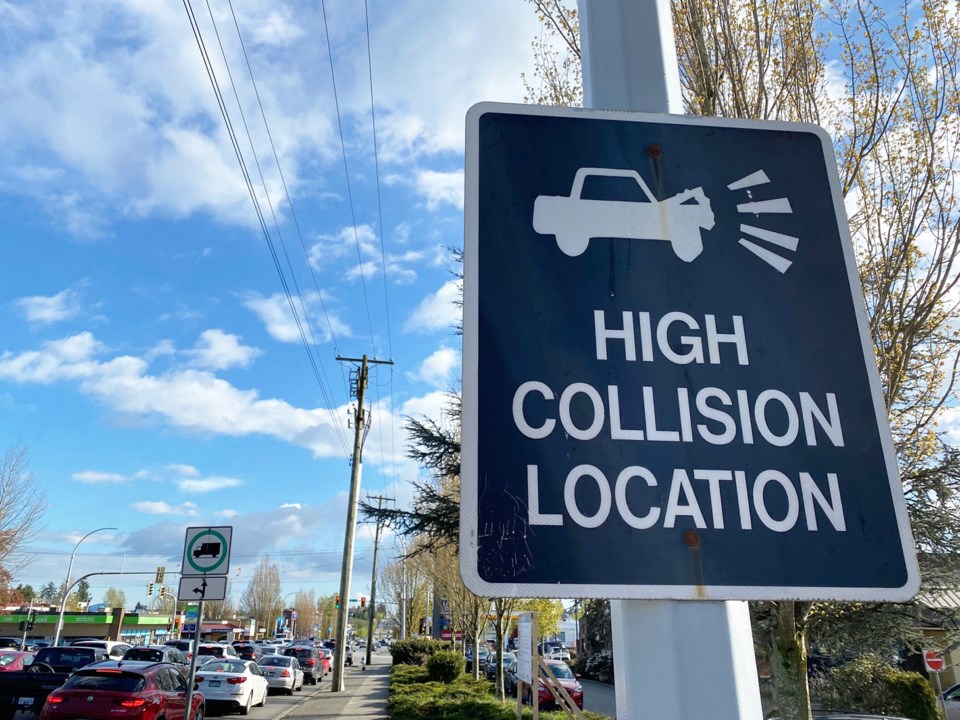Delta drivers could eventually experience a safer experience along Scott Road.
That’s what the City of Delta in conjunction with its neighbour, the City of Surrey, wants to explore as both are collaborating on traffic safety improvements for Scott Road (120th Street) between 64th and 96th Avenues.
The City of Delta this summer issued a request for proposals for a consultant to help develop a Vision Zero Road Safety Strategy, focused on reducing traffic-related fatalities and serious injuries on the city’s roadways.
The consultant, among other things, will prepare cost estimates for countermeasures identified in separate reports for the Scott Road corridor, with a focus on a collaboration with Surrey, which already has its own Vision Zero plan.
ISL Engineering and Land Services Ltd. came out with a report earlier this year on the Scott Road corridor, noting both cities recognize the roadway is a high-priority for safety improvements.
A Transportation Association of Canada Field Observation report was referenced for all the study intersections.
The section between 64th Avenue and 96th Avenues was identified as Delta’s most significant killed and seriously injured hotspot area, while it also includes five of Surrey’s top 50 Vision Zero intersections.
The goal was to improve road safety and traffic operation at 10 key intersections along the study corridor by reviewing the traffic conditions, evaluating historic collisions, identifying any existing and potential safety and operational issues, then recommending possible corridor-wide and site-specific safety countermeasures.
“The addition of transit priority measures to accommodate TransLink’s proposed R6 RapidBus services present both a challenge and an opportunity from a road safety perspective. Providing the R6 corridor (between 72 Avenue and 96 Avenue) is a significant step towards reimagining this car-dependent commercial corridor to a vibrant people-centric commercial community,” the report notes.
Accommodating transit into an auto-centric roadway environment also has the potential to result in safety concerns for the existing road users, as well as increased numbers of transit passengers and crossing pedestrians along the corridor, the report warns.
The report also goes on to note half of the 10 intersections (64 Avenue, 75A Avenue, 86 Avenue, 92 Avenue and 96 Avenue) had higher percentages of collisions reported as a casualty (fatal or injury involved).
Rear-enders were the most predominant casualty collision type, followed by left turn collisions.
The report notes driving without due care was the most dominant contributing factor, followed by failed to yield/stop, and the contributing factors were primarily resulted in rear-end collisions.
Such collision types and causes are common within urban corridors due to frequent stop-and-go activities between signalized intersections, heavy vehicles and crossing pedestrian volumes, traffic congestion, wide intersections and limited gaps for left-turn vehicles, as well as relatively high vehicle speed on a straight roadway.




